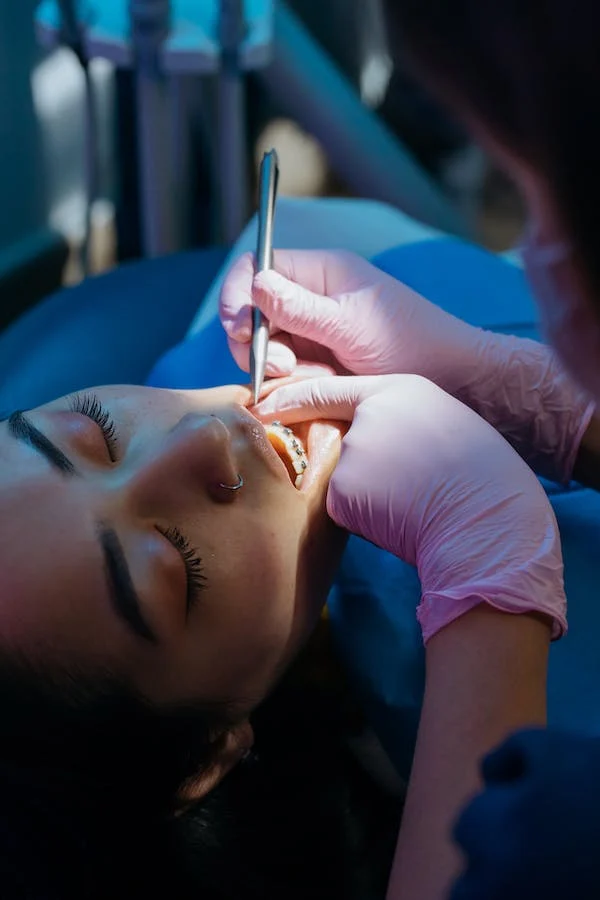A Biased View of Legacy Orthodontics
A Biased View of Legacy Orthodontics
Blog Article
Our Legacy Orthodontics Ideas
Table of Contents6 Easy Facts About Legacy Orthodontics ExplainedThe Single Strategy To Use For Legacy OrthodonticsGetting The Legacy Orthodontics To WorkThe Best Strategy To Use For Legacy OrthodonticsTop Guidelines Of Legacy Orthodontics
In addition, we supply flexible treatment schedules, versatile repayment options and an enjoyable, satisfying experience.An orthodontist is a dental professional educated to identify, avoid, and treat teeth and jaw irregularities. They deal with existing conditions and are educated to identify issues that may develop in the future. Orthodontists work with individuals of any ages, from children to adults. People frequently connect an excellent smile with health.
Malocclusion, or misaligned teeth, can result in oral concerns, including tooth decay, gum illness, and difficult or unpleasant chewing. Yet not everyone is born with straight teeth. If you have a poor bite or huge spaces between your teeth, you may wish to speak with a dental expert focusing on orthodontic treatment.
Little Known Facts About Legacy Orthodontics.
( Image Credit History: DigitalVision/Getty Images) Orthodontists utilize repaired and detachable oral tools, like dental braces, retainers, and bands, to alter the position of teeth in your mouth. Orthodontic treatment is for dental problems, consisting of: Uneven teethBite issues, like an overbite or an underbiteCrowded teeth or teeth that are too far apartJaw misalignmentThe objective of orthodontic treatment is to improve your bite.
A healthy bite ensures you can consume, chew, and talk effectively. While you could consider orthodontists as mainly for youngsters or teens that require braces, they can correct dental problems at any type of age. Orthodontists attend university, oral institution, and orthodontic college. After graduation, they spend 2 or 3 years in an orthodontic residency program.
All orthodontists are dental professionals, yet not all dental professionals are orthodontists. Orthodontic residency programs provide intensive, focused instruction for dental professionals. They concentrate on 2 areas: How to appropriately and safely relocate teeth How to appropriately direct growth in the teeth, jaw, and faceOnce an orthodontist has actually completed training, they have the option to come to be board accredited.
The Best Guide To Legacy Orthodontics
Malocclusion leads to tooth congestion, an irregular jaw, or uneven bite patterns. Malocclusion is generally treated with: Your orthodontist attaches metal, ceramic, or plastic square bonds to your teeth.
If you have only minor malocclusion, you might be able to utilize clear braces, called aligners, rather of typical dental braces (https://www.find-us-here.com/businesses/Legacy-Orthodontics-Leesburg-Virginia-USA/34143883/). Some individuals require a headwear to assist relocate teeth right into line with stress from outside the mouth. After braces or aligners, you'll require to put on a retainer. A retainer is a custom-made tool that keeps your teeth in position.
They're frequently made use of on children. They can develop additional area in the mouth without needing to pull teeth. If you have a severe underbite or overbite, you could require orthognathic surgical treatment (additionally called orthodontic surgical treatment) to lengthen or shorten your jaw. Orthodontists use cords, surgical screws, or plates to sustain your jaw bone.
You might need to see an orthodontist if you have: Crowding or not enough space for every one of your teethOverbite, when your top teeth come over your bottom teethUnderbite, when your base teeth are as well far forwardSpacing or problems with gapsCrossbite, which is when your upper teeth fit behind your bottom teeth when your mouth is closedOpen bite or an upright space in between your front base and upper teethMisplaced midline, when the center of your bottom and upper teeth don't line up Remedying a dental malocclusion can: Make attacking, eating, and talking easierImprove the balance of our face and your overall appearanceEase pain from temporomandibular joint conditionsDifferent your teeth and make them easier to cleanse, assisting stop tooth degeneration or tooth cavities It's frequently a dental practitioner who first notices misaligned teeth during a routine examination.
Legacy Orthodontics Fundamentals Explained

During your very first orthodontic consultation, you'll likely have: An oral examPhotos taken of your face and smileDental X-raysPanoramic (360 degree) X-rays of your face and headImpressions to produce molds of your teethThese tests will certainly help your orthodontist understand just how to wage your therapy. orthodontist. An orthodontist is a dental practitioner who's had training to treat your teeth and jaw
An orthodontist is focused on your bite, so something like a damaged tooth would certainly be dealt with by a dental professional. Orthodontists are concentrated on your bite, or the method your teeth fit together, and the straightness of your teeth.
Ever asked yourself exactly how celebrities always appear to have completely lined up teeth? The response typically depends on the proficient hands of an orthodontist. What specifically does an orthodontist do? Orthodontists are dental experts who focus on remedying abnormalities in the teeth and jaws. Their expertise exceeds simply developing a lovely smile; it encompasses improving your total dental wellness and feature.
The smart Trick of Legacy Orthodontics That Nobody is Discussing

, orthodontists have a varied toolkit at their disposal. These tried-and-true dental braces use a system of brackets adhered to the teeth and linked by cords.
Clear aligners, like Invisalign, are a prominent choice for patients seeking an extra very discreet therapy alternative. These removable trays are customized to considerably change the teeth's placement. Headwear might be utilized combined with dental braces or aligners to use added targeted pressures, specifically for correcting jaw inconsistencies. In cases of narrow jaws, palatal useful site expanders can be used to develop space for correct tooth alignment.
Report this page